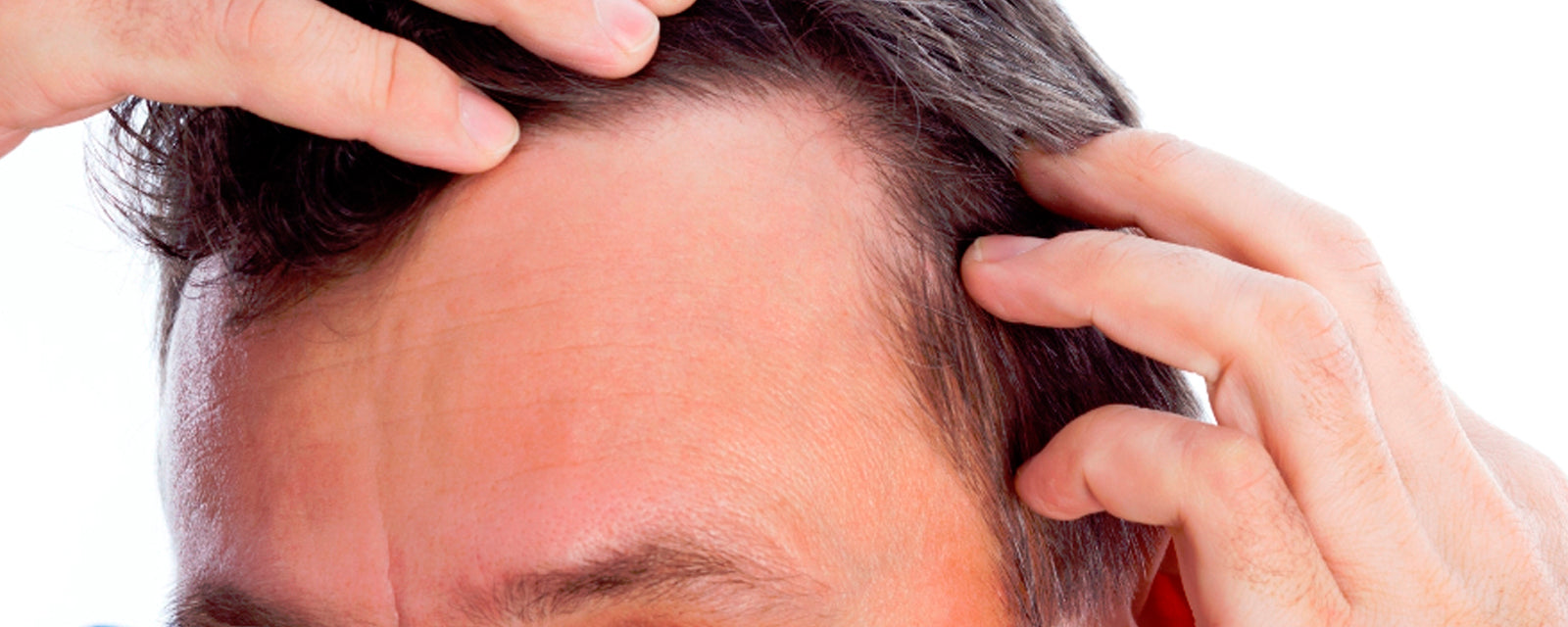5 Effective Steps To Battle Male Pattern Baldness

Male pattern baldness (androgenetic alopecia) is not just your father’s issue. It is not always true that hair loss in men indicates aging. Millions of younger men have hair loss and thinning. In fact, an estimated 40% of men have noticeable hair loss by age 35. Fortunately, there are more solutions than ever to control male hair loss at all ages.
Top 5 Ways to Stop Hair Loss in Men
1. Nutrition
At the first signs of thinning around the temples, take action immediately to nourish thinning hair with a combination of vitamins, minerals and marine proteins. When our diets are lacking the right nutrients, thinning hair and brittle nails are among the first effects. Hair and nails are considered non-essential body parts and so generally receive nutrients last. A clinically researched hair growth supplement for men delivers the right combination of nutrients to the hair follicle to combat these effects and promote thicker, fuller hair.
2. Clean Hair and Scalp
A healthy scalp creates the right environment for healthy hair growth. The most suitable shampoos for balding men are ones that are gentle enough for everyday use, exfoliating the scalp to remove dirt, debris and sebum, to maintain a healthy scalp.
3. Healthy Scalp
To handle male hair loss, try a hair thickening serum for men that helps maintain a healthy scalp. Try one with clinically tested ingredients of natural origins, to make hair look thicker. A good scalp massage can also help promote healthy hair growth by increasing blood flow to the scalp. Try a 5-minute scalp massage every morning to promote an invigorated scalp that is the optimal environment for healthy hair growth.
4. Minimize Styling
When looking for how to reduce hair fall in men, turn to the best low-maintenance men’s grooming tips. Less is more when you are trying to prevent further hair loss. Steer very clear of the age-old comb-over and reduce the amount of styling products you use. The less you comb or style your hair, the less damage you’ll cause, and your hair will look thicker. Instead, turn to your barber for the answer. Try a short, cropped haircut that is longer on top and shorter on the sides to draw the eye away from your thinning hair.
5. Drugs & Other Medical Measures
As a last resort, there is of course topical minoxidil drugs or hair restoration surgery. However, some studies show that minoxidil treatments may not be as effective in the long-term and 2% topical minoxidil solution significantly regrows hair only in about one-third of men who take it. In addition, minoxidil is a long-term commitment. Though minoxidil regrows hair, it is also a long-term commitment. When you stop taking minoxidil, the hair you’ve regrown will fall out again.
Hair transplantation is a permanent hair growth solution. But it is expensive, often not covered by health insurance and, as with any surgery, there is a risk of complications. If you go the surgery route, it’s best to invest in a top surgeon to achieve the most lasting and natural-looking results.
Why Do Men Go Bald
When searching for effective male pattern baldness treatments, these top 5 ways to stop hair loss in men will get you only so far. It’s important to understand the science behind male hair loss. Male pattern baldness, or androgenetic alopecia, occurs in men who are genetically predisposed to be more sensitive to the androgenic hormone DHT (dihydrotestosterone). In men who without androgenetic alopecia, 5% of testosterone is converted to DHT by the 5-alpha reductase enzyme. But in men with DHT sensitivity, DHT is toxic to the hair follicles along the hairline and crown. This affects how the hair follicles absorb vitamins, minerals and key nutrients. (See number 1 in the list above of top 5 ways to stop hair loss in men! A good hair growth supplement will help nourish thinning hair during this process.)
Hair follicles eventually miniaturize and the growing (anagen) phase of the hair growth cycle becomes shorter. Hair follicles near the ears and at the back of the head are less affected by DHT, which is why men with male pattern baldness generally have a horseshoe-shaped pattern of hair loss around the crown.
During the anagen phase, which lasts about 2-7 years, each hair grows thicker and darker. The resting (telogen) phase, when a hair finishes growing and then falls out, lasts about 3 months. About 10% of hair follicles in men or women are in the resting phase at any one time. Men with DHT sensitivity gradually grow finer hair (called vellus hairs) until the follicles completely miniaturize and the follicles are dead, producing no hair at all.
